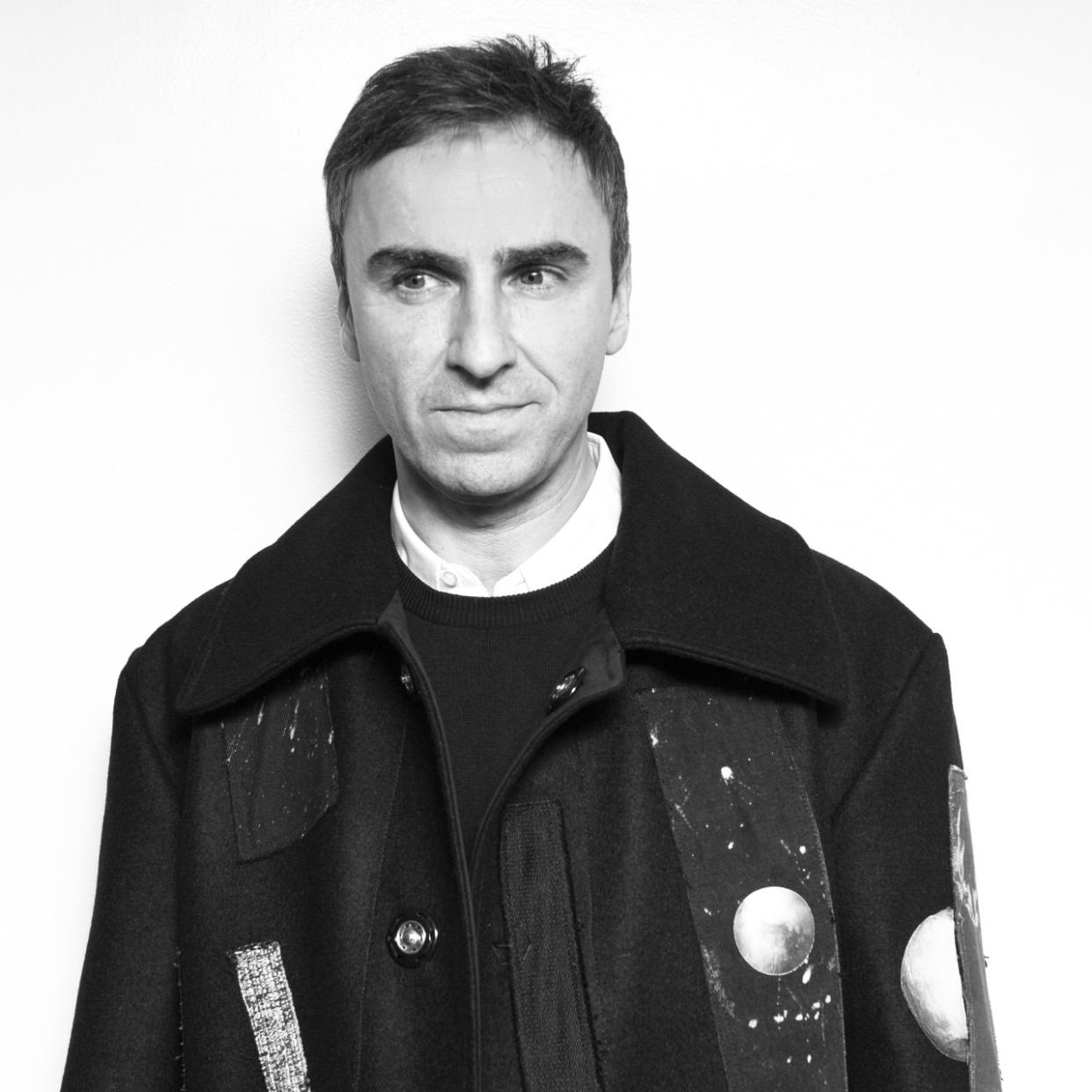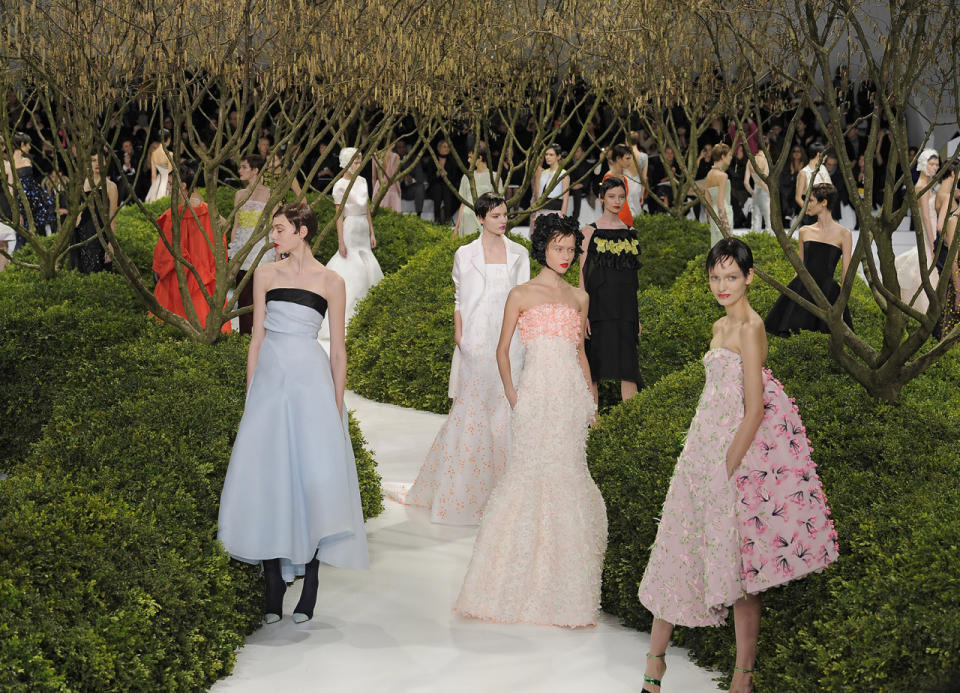Raf Simons, Meet Calvin Klein — What the Legendary Belgian Designer Means for the Future of CK

Photo: BFA
After months of speculation, it was announced today that designer Raf Simons is the new chief creative officer at Calvin Klein, where he will oversee all brands. Calvin Klein also announced that Simons’s studio director, Pieter Mulier, will join the company as creative director. The rumor mill surrounding the appointment began spinning back in October 2015 when Simons stepped down from his role as women’s director at Christian Dior. The exit, which occurred peacefully and with no ill will between Simons and Dior’s executives, raised questions about the overextension and excessive pressure that creatives face to fill an ever more demanding show and delivery calendar.
“It is a decision based entirely and equally on my desire to focus on other interests in my life,” Simons said at the time. The industry has since seen significant examples of reformatting. Some labels, like white-hot newcomer Vetements and equally white-hot heritage brand Gucci, are combining their men’s and women’s shows into one. Some are making collections available for purchase immediately following their unveiling — see Burberry. Presumably, these decisions have been made to streamline — and thus lighten — the load on designers’ weary shoulders.
A similar reconsideration should be expected, in some manifestation, at Calvin. But, ahead of that, what of the clothes? The coupling, by most counts, seems to make sense for those familiar with both Simons’s and Calvin Klein’s respective legacies. Simons is the metered Belgian, known for cerebrally paring back yet elevating cut, cloth, and purpose. Calvin Klein — most recently helmed by Francisco Costa on the women’s side and Italo Zucchelli on the men’s — is a bastion of American chic, known for its simplicity with an underbelly of provocation. But to predict what might come of Simons’s early-round collections for CK, one must trace the overlaps of both entities’ design signatures.

Raf Simons Spring 1998 “Black Palms” collection. (Photo: Courtesy of Raf Simons)
Simons launched an eponymous menswear line in 1995 (it still exists today), which quickly gained traction thanks to an initial focus on, and celebration of, youth and subcultures. Spring 1998’s “Black Palms” collection, to anchor the point with a contemporary comparison, set a precedent for what Hedi Slimane would later do at Dior Homme and Saint Laurent: There were bone-thin boys in rocker clothes, all lean limbs and sleeveless tees, bare chests under blazers, and even a ratty sweater or two.
Simons’s Spring 2002 collection, “Woe Onto Those Who Spit on the Fear Generation the Wind Will Blow It Back,” featured a protectionist element with wrapped headscarves and slogans that read, “Resistance,” “Wanderlust,” and “We are ready and willing to ignite,” among others. His early collections were anti-perfunctory, political, and clearly tethered to a greater cultural Zeitgeist — fashion for men as a means to complement (and push) the entire male identity, with art, architecture, music, and more also informing the process. And though Simons’s focus has evolved into more of an elemental if not abstract approach to design — a focus on the fundamentality of clothing — his MO has always been about how fashion contributes to the self and the times as they change. Few if any designers are in Simons’s league when it comes to being current but not trendy. The man just has a natural instinct for creating for the moment, albeit with lasting appeal. So, fashion, but with legs as long as the skinny dudes he used to dress back in the ’90s.

Raf Simons’s Jil Sander Spring 2008 collection. (Photos: First View)
Simons started designing for women in 2005 when he was installed at Jil Sander. Adhering to Sander’s preference for strictness and minimalism, Simons demonstrated the designer’s significant capacity for control. There, he focused on shape and construction, yet he was still able to push the proverbial envelope despite operating in a more clinical headspace. See the tissue-thin tulle sheets used to compose a dimensional top at Jil Sander Spring 2008 (above). The effect was clean and pure in conceit, but rich, and even maximal, in aesthetic. “He designs with such great restraint,” says the influential Leandra Medine (also known as the Man Repeller). “You feel the soul and intention that went into the formation of every garment.”
Simons’s final Jil Sander collection, a beautiful and ultrarefined lineup of coats and dresses for Fall 2012, had some of the audience (and the designer himself) in tears. Such is Raf’s magic. He then transitioned to Christian Dior, where he spearheaded a rousing, kinetic reimagining of the storied house. Ever-prescient, he spotted the elevated streetwear trend well in advance of the rest of the pack. He might even have started it when he introduced sneakers on the couture catwalk for Spring 2014. (To be fair, Chanel had them too). Simons’s Dior period was splashy yet polished and considered, and his work moved the label into a new light among consumers, who seemed to welcome a change from Dior’s previous head honcho, John Galliano, and his OTT theatricality.

Raf Simons’s Spring-Summer 2013 haute couture collection for Christian Dior. (Photo: Catwalking)
Simons’s propensity for restraint, intent, and inclusivity will serve him well at Calvin Klein, with its reputation for New York-centric modishness and all-American cool. From the sexy minimalism of the ’90s to, well, the sexy minimalism of #mycalvins (you’ve no doubt seen those Justin Bieber and Kendall Jenner ads), Calvin Klein’s longtime stance syncs well with Simons’s: The company holds a high-fashion and high-concept finger to a greater, pan-cultural heartbeat — and in some ways, CK impacts that pulse. (Earlier this year, at the brand’s men’s show in Milan, Cameron Dallas appeared in the front row. CK was among the first labels to tap this new vein of celebrity, and Dallas’s appearance garnered headlines worldwide.) In these folds between purity and pop culture, Simons will likely thrive. And with Simons’s proven track record of self-control, the simplicity upon which Calvin Klein has built its aesthetic badge will also likely thrive. What will be most interesting, though, is to see how Simons’s European rigor and education translate to a notably looser, faster East Coast sensibility. But he loves New York, and the new time zone might act as a breath of fresh air — both for the man himself and observers like us.
